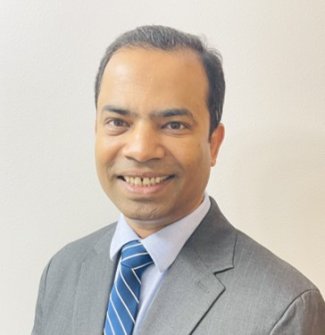
Knee injuries, particularly ACL and meniscus tears, are extremely common, especially in athletes who participate in contact sports like football, basketball and soccer. A serious tear will leave athletes out of the sport for months and will almost always require surgery and extensive rehabilitation.
What if there was a nonsurgical, regenerative way to "fix" meniscus injuries? Solaiman Tarafder, a new faculty member in South Dakota State University's Jerome J. Lohr College of Engineering, is inching closer to that possibility.
Tarafder was hired as an assistant professor in SDSU's Department of Mechanical Engineering earlier this summer after eight years as a postdoctoral fellow and research scientist at Columbia University's Irving Medical Center. There, Tarafder and his colleagues conducted revolutionary work on using bioactive materials to fuel the regeneration of bone-to-tendon interface and fibrocartilage tissue.
"Surprisingly, there are no regenerative therapies for meniscus (injuries) yet," Tarafder said.
In Bangladesh—where Tarafder is originally from—he completed a bachelor's degree in chemistry and a master's degree in inorganic chemistry from Shahjalal University of Science and Technology. In 2008, Tarafder relocated to Pullman, Washington, to pursue a doctorate in material science and engineering at Washington State University. His research focus was in biomaterials and tissue engineering, which laid the groundwork for Tarafder's future work.
"When I was working on my Ph.D., my research focus was in bone tissue engineering and drug delivery," Tarafder said. "Basically, how to repair and regenerate when you have a bone injury."
At WSU, Tarafder investigated how 3D printers could be used to create scaffolds from bioceramics that could enhance both bone regeneration and healing.
"The scaffold will provide support to regrow and regenerate new tissue, Tarafder said. "Over time, the scaffold's material will actually biodegrade, and new tissue will form to take the shape (of the scaffold)."
Materials biodegrading and dissolving after providing the necessary support to the healing meniscus, ligament or tendon is a novel idea that would be revolutionary if it could be commercialized down the road, Tarafder said.
"Currently, synthetic, non-biodegradable materials are being used commercially," Tarafder said. "These therapies are not actually very effective in the long run."
Tarafder is a part of a few different research groups in the U.S. focused on this type of work.
"It's a nice collective effort," Tarafder said. "We are hopeful that this new type of treatment will cut down on rehabilitation time for meniscus injuries."
Now at SDSU, Tarafder will continue his work with biomaterials innovation and regenerative engineering approaches with an increased focus on bioadhesives for cartilage and fibrocartilage tissue repair and regeneration.
"My goal is to advance our understanding of how materials chemistry, composition, spatiotemporal delivery of bioactive cues along with advanced manufacturing and regenerative engineering approaches can be leveraged for the regeneration of biomechanically functional cartilage, tendon, ligament and bone," Tarafder said.
"The mechanical engineering department is thrilled to welcome Dr. Solaiman Tarafder as a valuable addition to our community," said Yucheng Liu, head of SDSU's Department of Mechanical Engineering. "Dr. Solaiman brings much-needed expertise to strengthen our research and teaching in the fields of biomaterials, biomanufacturing, and biomechanics. He has already become a key faculty member in our biomedical engineering and his proficiency in experimental work complements our existing strengths in computational modeling and simulation. I am excited that he chose to join the mechanical engineering department and am looking forward to the new research perspectives, teaching approaches, and personal contributions he will bring to the department."
This fall, Tarafder is also teaching an undergraduate-level lab in the Lohr College of Engineering.
- Contact:
- Telephone number: 605-688-6161
Republishing
You may republish SDSU News Center articles for free, online or in print. Questions? Contact us at sdsu.news@sdstate.edu or 605-688-6161.

